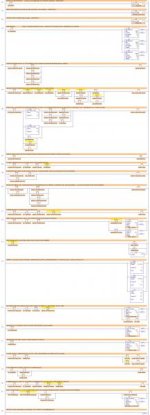jaywillnot
Lifetime Supporting Member
Okay, I understand the whole "the last rung wins" concept, and by gosh, I'm really trying to learn to apply it with programming practice but sometimes I still get confused on how to get the outcome I want.
Apparently, I'm still stuck in the A+B=C mode when I should be looking at it as if to get to C from A I need to find where B fits in. I know I'm losing ya'll and I'm sorry, heck I'm losing myself. I know that we must write the program to interact and control the physical relay logic wired into the machine, but how can we have the start/stop conditions on say Rung 20 of File 1 after a lot of other mathematical conditions and it still work correctly?
I've been going over the Bottle Line Ex 5 Lancie wrote and I'm trying to wrap my head around it. Maybe I was taught wrong in college and I wasted my money....
Its really frustrating when asked to help someone on the floor because they look up to me and I can't help them.

Apparently, I'm still stuck in the A+B=C mode when I should be looking at it as if to get to C from A I need to find where B fits in. I know I'm losing ya'll and I'm sorry, heck I'm losing myself. I know that we must write the program to interact and control the physical relay logic wired into the machine, but how can we have the start/stop conditions on say Rung 20 of File 1 after a lot of other mathematical conditions and it still work correctly?
I've been going over the Bottle Line Ex 5 Lancie wrote and I'm trying to wrap my head around it. Maybe I was taught wrong in college and I wasted my money....
Its really frustrating when asked to help someone on the floor because they look up to me and I can't help them.



